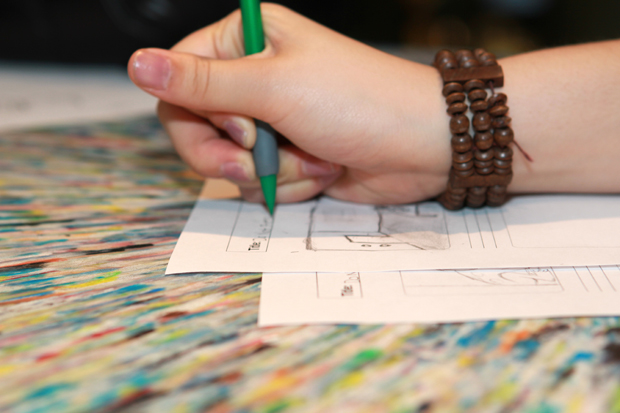Unit 2: Lesson 14
Introduce Part 3, Publish Graphic Story Adventures & TRAIL Marker #3
Unit 2: Lesson 14
Introduce Part 3, Publish Graphic Story Adventures & TRAIL Marker #3

LITERACY OBJECTIVE
By the end of this lesson students will be able to explain the rationale for their author’s choices in their graphic story sequels.
Literacy "I Can" Statements
"I can explain the rationale for my author's choices in the graphic story sequel I created."
Lesson Overview
| Steps | Pacing: 1-2 Hours |
|---|---|
| 45-90 Minutes | |
| 15 Minutes |
Standards Alignment
Targeted CCSS
Secondary CCSS
TEACHING RESOURCES
Classroom Charts
Student Materials
A4L Student Notebooks
Assessment
Art Materials
Life & Learning Skills
 Differentiation Options
Differentiation Options
![]() Leveraging Moments
Leveraging Moments
STEP 1: INTRODUCE PERFORM & INFORM
Process: Review the Unit Overview for Students to show students their progress so far. Tell students that in the next series of lessons, they will publish their graphic stories and present them to an audience. It’s a fun celebration of their work as graphic artists.
Step Alternatives: Perform & Inform Audiences
STEP 2: INTRODUCE LESSON 14
Process: Give an overview of the lesson objective. Make a cover for their graphic stories, bind the pages to create a book, and engage in the final TRAIL Marker activity.
Suggested Dialogue
Binding Graphic Story Adventures
STEP 3: MAKE COVERS FOR THE GRAPHIC STORIES
Process: Students select what they think are their most exciting panels. Then, they sketch a larger version of that panel on cardstock or construction paper that will serve as the cover of their graphic story. Students add the title and their names to the cover.
STEP 4: BIND THE GRAPHIC STORIES TO MAKE BOOKS
Process: Combine the sequel pages with the cover using yarn, staples, or spiral binding to create a published book. If small groups have created a sequel, put their pages together for one book.
STEP 5: GUIDE STUDENTS THROUGH TRAIL MARKER #3
Select one of the following options to facilitate the activity and discussion:
- Have students work in pairs or small groups to complete the TRAIL Marker notebook page. Have them talk before writing to get ideas flowing. Then, have a whole class discussion.
- Have students complete the TRAIL Marker individually and then share in small groups or whole class.
TRAIL Marker: Formative Assessments
Suggested Dialogue
Reflecting on the Graphic Story Sequel
STEP 6: CLOSE LESSON 14
Process: Close the lesson with a look forward describing the next lesson.
Suggested Dialogue
Looking Forward
Performing The Closing Ritual (Optional)
CONGRATULATIONS ON COMPLETING LESSON 14! YOU ARE NOW READY TO MOVE ONTO LESSON 15 OF UNIT 2.
You've now reached the end of our ArtsforLearning Curriculum preview.



